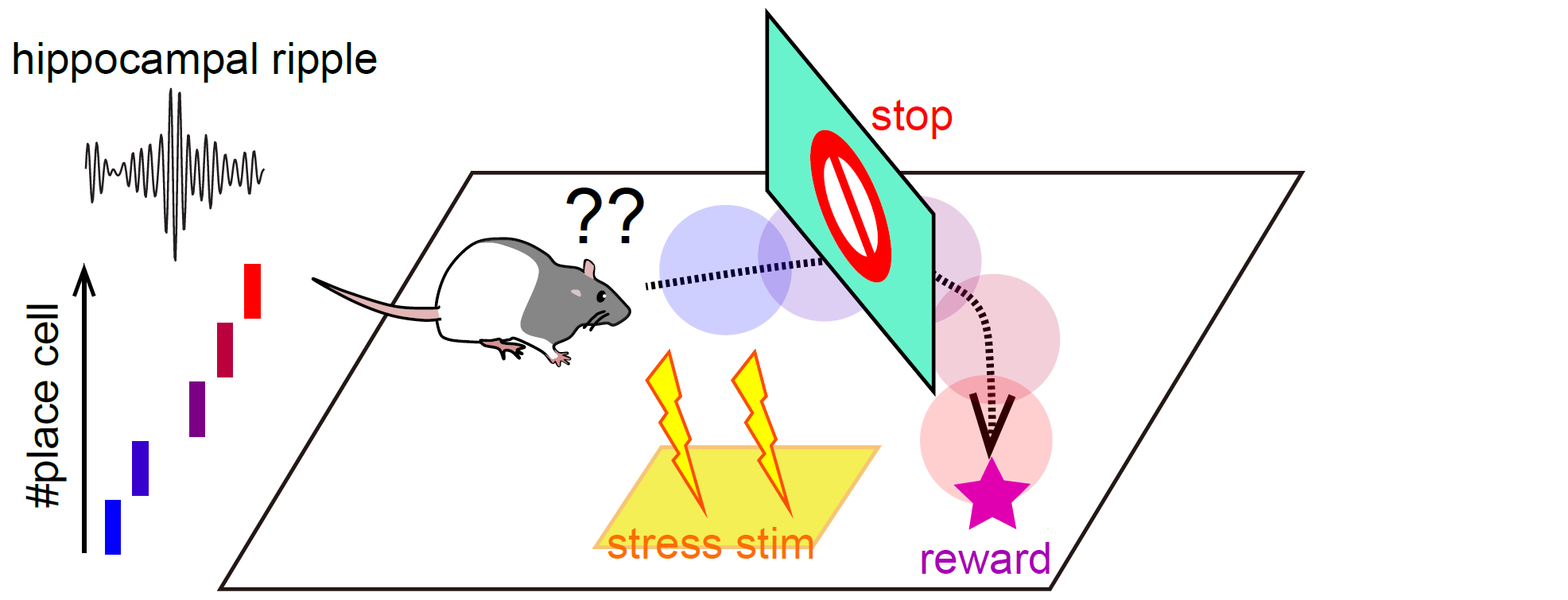Takuya Sasaki (The University of Tokyo)

“Sequential reactivation of hippocampal place cells for behavioral adaptation”
Hippocampal pyramidal cells show place-selective firing, termed as “place cells” (this finding was awarded with the Nobel Prize in 2014). These cells occasionally exhibit a transient synchronous burst firing when the animal is outside the place field, which is represented as a large negative local filed potential (sharp wave ripple). Recent studies show that the synchronized spiking patterns compose of out-of-field sequential reactivation of place cells (termed as “replay”) with both prospective and retrospective directions, which are hypothesized to play a crucial role in future prediction and planning of behavior. This study examines how hippocampal replay is related to behavioral patterns of rodent animals using a large-scale multiunit recording technique. We especially focus on (i) forward and backward replay of place cells when the shape of a learned trajectory is changed during a spatial task and (ii) reactivation patterns emerging during offline sleep/rest states after the task. The study will provide new insights into the neuronal mechanisms underlying adaptive behavior.
Recent Publications
1. Sasaki T, Leutgeb S, Leutgeb JK (2015) Spatial and memory circuits in the medial entorhinal cortex. Curr Opin Neurobiol 32:16-23.
2. Sasaki T, Beppu K, Tanaka KF, Fukazawa Y, Shigemoto R, Matsui K (2012) Application of an optogenetic byway for perturbing neuronal activity via glial photostimulation. Proc Natl Acad Sci USA 109:20720-20725.
3. Sasaki T, Matsuki N, Ikegaya Y (2012) Targeted axon-attached recording with fl uorescent patch-clamp pipettes in brain slices. Nat Protoc 7:1228-1234.
4. Sasaki T, Matsuki N, Ikegaya Y (2011) Action potential modulation during axonal conduction. Science, 331:599-601.
Posted:2016/03/10

